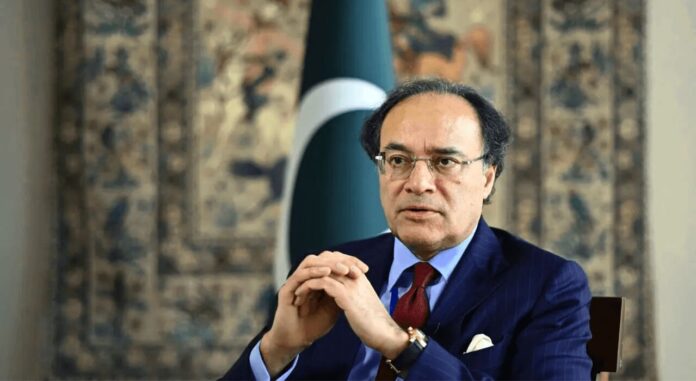Pakistan has consolidated its macroeconomic stability through fiscal discipline, improved foreign exchange reserves, and falling inflation while maintaining a growth target of 3.5 percent for the current fiscal year, Finance Minister Muhammad Aurangzeb said in an interview with CGTN America.
Aurangzeb said the country had made “significant progress” since the International Monetary Fund (IMF) approved the $7 billion programme last year, adding that all major global rating agencies — Fitch, S&P, and Moody’s — have upgraded Pakistan’s outlook for the first time in nearly three years.
“Our foreign exchange reserves now stand at two and a half months of import cover, inflation has fallen to single digits, and the policy rate has been halved,” he stated, noting that Pakistan had successfully completed the IMF’s second review under the Extended Fund Facility and reached a staff-level agreement.
He said the IMF’s confidence in Pakistan’s economic management reflected progress in reforms related to taxation, energy, public finance, and privatisation. “We are grateful that the IMF management continues to repose trust in Pakistan’s authorities, especially on structural reforms,” Aurangzeb said.
The minister noted that Pakistan had re-entered international capital markets after more than two years, securing funding from Middle Eastern banks and preparing to issue its first Panda bond by year-end. “We even repaid a $500 million Eurobond last month without market concern,” he said, adding that another $1.3 billion repayment due in April 2026 was well within reach.
Aurangzeb said the government had revived its privatisation agenda after years of stagnation. “This year, we completed the first transaction — a small bank acquired by a UAE-based conglomerate that plans to expand and digitise its operations,” he said, expressing confidence that Pakistan International Airlines (PIA) would be privatised before the fiscal year ends.
Discussing the recent floods, Aurangzeb said Pakistan’s growth forecast had been revised from over 4 percent to 3.5 percent due to flood damage in key agricultural regions. “Climate change is an existential issue for Pakistan. Our rice and cotton crops have been affected by flooding across three major rivers,” he said.
Despite these setbacks, he remained optimistic. “We grew by 3 percent last year, and despite the floods, we expect around 3.5 percent growth this year,” he noted.
Commenting on Prime Minister Shehbaz Sharif’s recent visit to China, Aurangzeb said Pakistan and China had formally launched the second phase of the China-Pakistan Economic Corridor (CPEC), shifting focus from infrastructure to industrial and private-sector development.
“Phase 1 was about infrastructure. Phase 2.0 is about monetising that infrastructure through Special Economic Zones and private-sector partnerships,” he said, adding that 24 joint venture agreements were signed during the visit.
The new phase of CPEC will prioritise projects in minerals and mining, agriculture, information technology, artificial intelligence, and pharmaceuticals, including local vaccine production in collaboration with Chinese firms. Aurangzeb highlighted the Service Long March joint venture — a tyre manufacturing project between Pakistan’s Service Group and China’s Long March — as an example of successful industrial collaboration. “About 80% of its products are exported, and it could become the first Pakistan–China joint venture to list on the Hong Kong Stock Exchange,” he added.
Aurangzeb said the government’s digitisation drive, led by the prime minister, had raised the country’s tax-to-GDP ratio from 8.8% to 10.2% through AI-driven monitoring and analytics. “Digitisation is not just about technology; it’s about formalising our cash economy,” he said.
He said the government’s tax and data reforms were central to achieving long-term fiscal sustainability and improving transparency in public finance.
The finance minister said Pakistan had recently concluded a 19% tariff arrangement with the United States, expected to benefit the country’s textile exports, particularly in home textiles. He also cited Pakistan’s growing trade engagement with Central Asian republics as part of a South–South diversification strategy. “We are exploring new corridors with Azerbaijan, Uzbekistan, and Kazakhstan,” he said.
Referring to the Shanghai Cooperation Organization (SCO) summit in Tianjin, Aurangzeb endorsed President Xi Jinping’s Global Governance Initiative, which promotes sovereign equality, the rule of law, and multilateralism. “There can be ups and downs, but these guiding principles make sense for a cooperative world order,” he remarked.
Aurangzeb concluded that Pakistan’s economic progress — supported by improved reserves, structural reforms, and renewed international engagement — reflected growing confidence in the country’s recovery trajectory.




